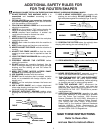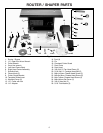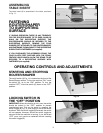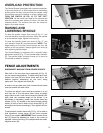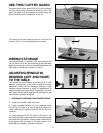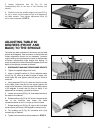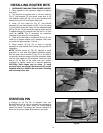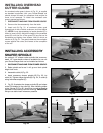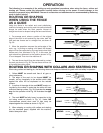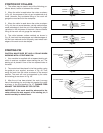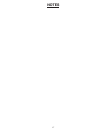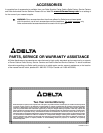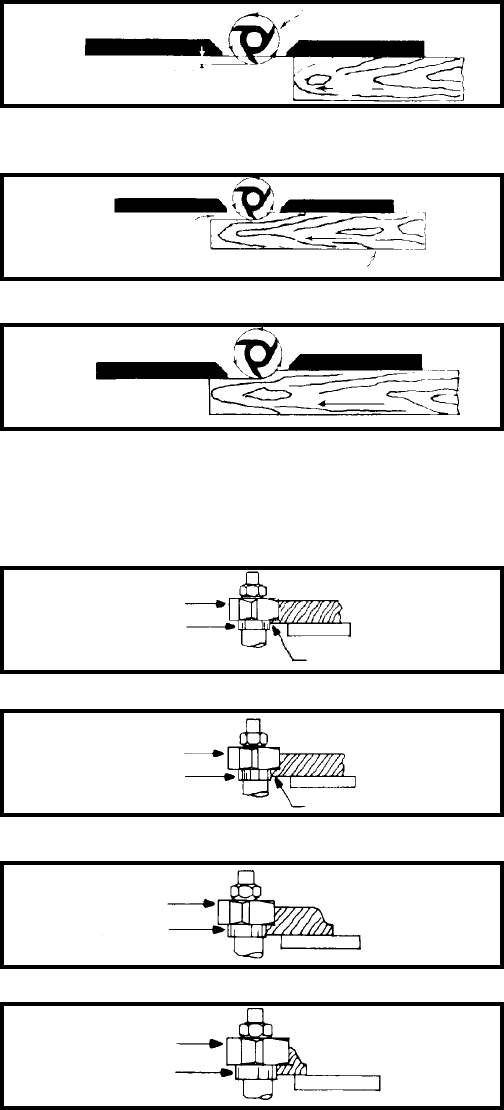
15
OPERATION
The following is an example of the setting-up and operational procedures when using the fence, collars and
starting pin. Please review this information carefully before turning on the power to avoid damage to the
machine or personal injury. WARNING: The use of accessories and attachments not recommended by Delta may
result in risk of injuries.
ROUTING OR SHAPING
WHEN USING THE FENCE
AS A GUIDE
Using the fence is the safest and most satisfactory
method of shaping and routing and this method should
always be used when the work permits. Almost all
straight work can be shaped using the fence as follows:
1. For average work, where a portion of the original
edge of the work is not touched by the cutter, both the
front and rear fences are in a straight line, as shown in
Fig. 36.
2. When the operation removes the entire edge of the
work, e.g., in jointing or making a full bead, the shaped
edge will not be supported by the rear fence when both
fences are in line, as shown in Fig. 37. In this case, the
work should be advanced to the position shown in Fig.
37 and stopped. Then turn the machine off.
3. The rear fence should then be advanced to contact
the work, as shown in Fig. 38. The rear fence will then be
in line with the cutting circle.
Fig. 36
Fig. 37
Fig. 38
ROUTING OR SHAPING WITH COLLARS AND STARTING PIN
When using collars and starting pin, the following rules must always be followed for good work and safety in operation.
Fig. 39
Fig. 40
1. Collars MUST be smooth and free of all gum or
other substances.
2. The edge of the work to be shaped MUST be
smooth, as any irregularity in the surface which rides
against the collar will be duplicated on the molded
surface.
3. A portion of the edge of the work MUST remain un-
touched by the cutters in order that the collar will have
sufficient bearing surface. Fig. 39, illustrates the wrong
way for the operation while Fig. 40 illustrates the right
way.
DEPTH OF CUT
CUTTING
CIRCLE
FEED
FRONT FENCE
REAR FENCE
NO SUPPORT
WORK
CUTTER
COLLAR
NOT SUFFICIENT
BEARING SURFACE
WRONG
CUTTER
COLLAR
SUFFICIENT
BEARING SURFACE
RIGHT
4. The work MUST be fairly heavy in proportion to the
cut being made as shown in Fig. 41. Under NO
circumstances should short work of light body be
shaped against the collars as shown in Fig. 42.
5. When shaping or routing with collars and starting
pin, the overhead guard, supplied with the machine,
should always be used.
Fig. 41
Fig. 42
RIGHT
CUTTER
COLLAR
WRONG
CUTTER
COLLAR



